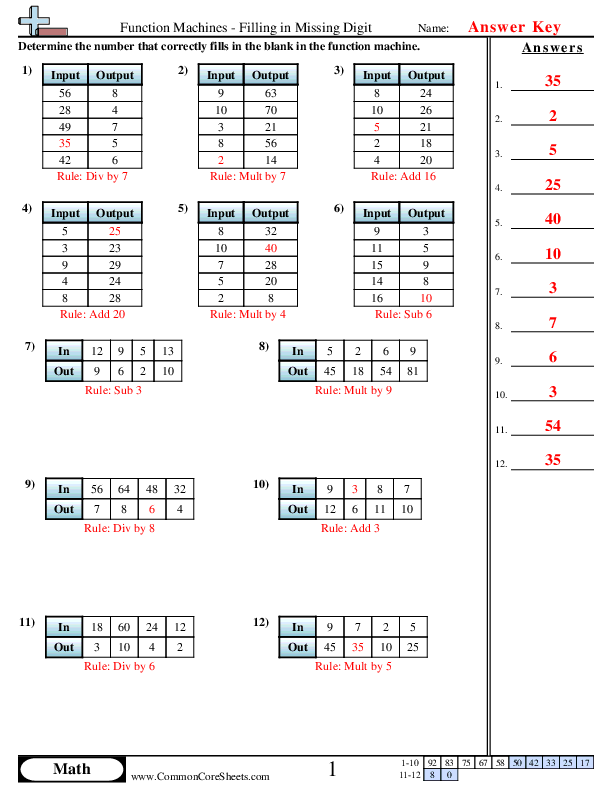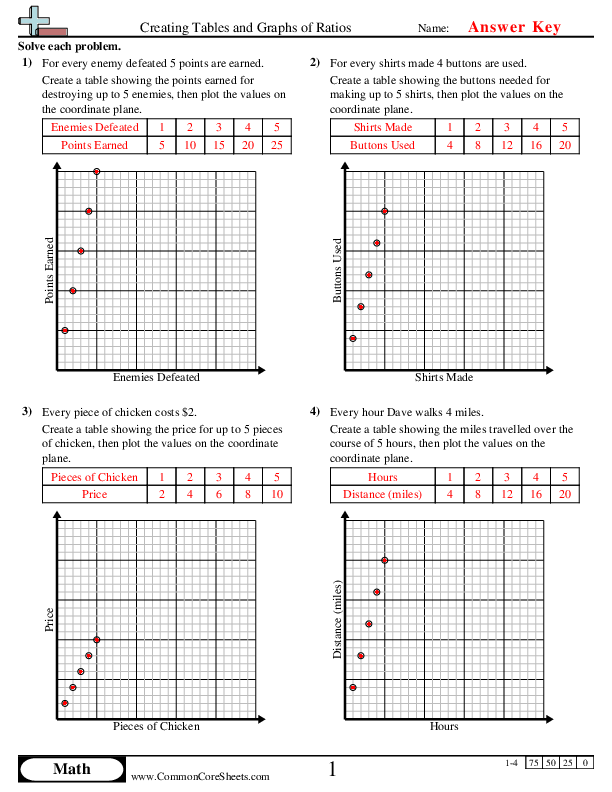Creating Tables and Graphs of Ratios
6rp3a


×
Description:
"This worksheet is designed to teach children the concept of ratios through practical problem-solving exercises. It contains four interactive math problems that require creating tables and graphs using provided real-life scenarios. The worksheet can be personalized to suit individual learning needs, used as flash cards for easy memorization, or incorporated into distance learning curriculum. It offers an engaging way to build fundamental math skills."

×
Student Goals:
Understanding RatiosUpon completing the worksheet, students should have a solid understanding of ratios and their practical application. They will have hands-on experience with creating ratio tables, allowing them to visually grasp the proportional relationship between a pair of numbers. This fundamental knowledge will make subsequent topics easier to understand, such as rates, fractions, and percentages.Plotting on Coordinate PlaneStudents should be proficient in plotting points on a coordinate plane, a vital skill they will continually need throughout their mathematical education. They will gain experience in transforming data from ratio tables into graphs. This will lay the foundation for future studies in graphing, data analysis, and spatial thinking.Real World ApplicationsStudents should have the ability to apply the concept of ratios to real-world scenarios. The worksheet provides practical examples related to everyday life, like shopping and gaming, making the abstract concept of ratios more tangible and relatable. This meet should lead students to realize the value of math in daily situations, ultimately instilling a more positive attitude towards the subject.Problem SolvingThe worksheet should enhance students’ problem-solving skills. By provided problems of varying complexity, it will challenge students to think critically and devise an effective approach to finding solutions. This experience should improve their capacity to tackle an array of mathematical problems.Conceptual UnderstandingFinally, students should develop a deep, conceptual understanding of the relationship between quantities. The process of creating ratio tables and graphs takes them beyond just memorizing procedures and moves towards understanding why those procedures work. This kind of understanding is crucial for learning higher-level math concepts in the future.

